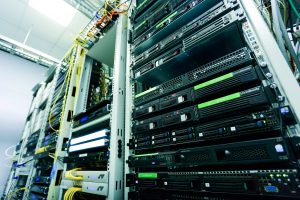What is Public Cloud Why Should Businesses Use Public Cloud Computing Technologies – If you still have doubts about the transition to the public cloud model, we have explained all the details about the public cloud below, step by step, so that you can learn what benefits the public cloud will bring to your business.
The public cloud is the most common cloud infrastructure model where cloud computing resources and assets are distributed across multiple businesses. Cloud infrastructure, including computing resources and assets, is owned and managed by a third-party cloud vendor.
It is an open source service that is popular with startups, large businesses, and software or hardware vendors.

What is Public Cloud Why Should Businesses Use Public Cloud Computing Technologies
With public cloud services, you don’t need to buy or manage any infrastructure. Instead, resources are made available to you on demand, usually as part of a paid subscription.
Public cloud resources can be sold or leased on a pay-per-click or pay-per-use basis.
The public cloud model encompasses many different technologies, capabilities, and features. However, a public cloud consists of the following key features:
On-demand computing and self-service provisioning
Wide network access
resource pool
Scalability and fast flexibility
Security
Pay-as-you-go model
1. Infrastructure as a service (IaaS)
Infrastructure as a service (IaaS) is a cloud-based computing service that provides businesses with leased servers for remote computing and storage applications. Users leverage IaaS to run software or store data on remote infrastructure without having to directly pay for the operating and maintenance costs of that infrastructure. Instead, customers typically have to pay a recurring subscription fee based on the number of server resources used.
What is IaaS? IaaS vs. Differences Between PaaS
2. Platform as a service (PaaS)
Platform as a service (PaaS) is a cloud-based service that removes the cost and complexity of developing real-time applications. PaaS provides cloud-based software development tools, standards-based application programming interfaces (APIs), and sample code to streamline application development.
What is PaaS? PaaS vs. Differences Between IaaS
With these cloud solutions, you can launch your preferred software platform on the hardware of your choice with one click, without the need to configure it. A cloud services platform gives you access to a cloud-based platform for all your business needs without the need to invest in dedicated infrastructure.
3. Software as a Service (SaaS)
SaaS (software as a service) is a type of software hosted by a single provider or software company. The software is managed by the customer success team and supported by the vendor’s product engineers. SaaS allows users to connect and use cloud-based applications over the internet.
What is SaaS? Everything You Need to Know About the Software
SaaS is a popular approach to delivering world-class software and hosting it externally so it can be accessed over the internet on a pay-as-you-go basis. Cloud users can enjoy the benefits of cloud software service management, such as reduced security concerns and less chance of data loss.
Affordable, pay-as-you-go services offered by public cloud providers allow businesses as they continue to grow their infrastructure to only pay for what they use and easily scale up or down based on demand.
By purchasing a shared infrastructure provided by a third party, businesses do not have to make an upfront hardware investment, saving them cost and configuration time. The flexibility of this service is perfect for those with unpredictable IT needs.
Every business has its own dynamics, so every business faces its own hurdles when migrating to the public cloud. For some businesses, the pay-as-you-go model and surprise costs can become prohibitively expensive as users cannot fully monitor or budget for cloud usage. For some businesses, fluctuations in data transfer from multiple cloud users can cause increased latency and unexpected performance issues. But for many, the biggest challenges with the public cloud come from the lack of options and security concerns.
 Free VPS
Free VPS
